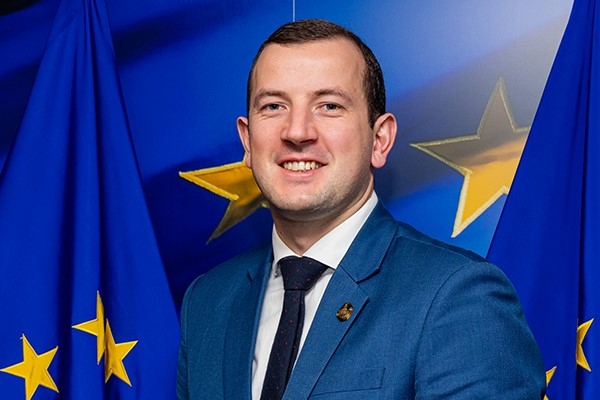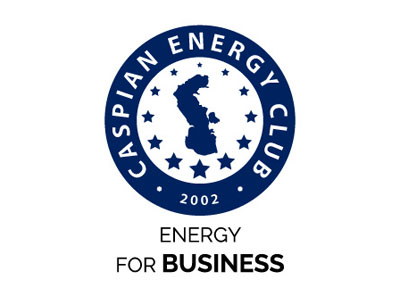Caspian Energy (CE): Mr. Commissioner, which specific tasks, concerning environmental protection and biodiversity, did the European Union set for the participants of the COP 26 Summit in Glasgow held in November 2021?
Virginijus Sinkevičius, EU Commissioner for Environment, Oceans and Fisheries: Science tells us that climate change and biodiversity loss are interdependent and we know that both emergencies need to be addressed together. The climate crisis has a severe and direct impact on biodiversity, but protecting biodiversity and restoring ecosystems is a tool to fight climate change and an excellent means of countering the effects of climate change. This is why the EU supported the UK COP26 nature campaign integrating elements on the relationship between biodiversity and climate.
Since biodiversity-related issues are cross-cutting and featured in various multi-lateral processes, the EU will continue to highlight the interlinkages and emphasise synergies. The EU remains strongly committed to strengthening the synergies between the United Nations Framework Convention on Climate Change and the UN Convention on Biological Diversity, including alignment with the Post-2020 Global Framework for Biodiversity. The EU is actively supporting the key international processes ahead, such as the Conference of the Parties (COP15) of the UN Biodiversity Convention with the proposed 30x30 target – achieving 30% of protected areas on land and 30 % on sea by 2030; the negotiations on a binding international treaty to protect ocean biodiversity beyond national jurisdictions; Marine Protected Areas in Antarctica; and a greater climate ambition at COP26 to reach net zero emissions by 2050.
We also wish to advance measures such as nature-based solutions to mutually reinforce co-benefits for climate mitigation and adaptation, and halt biodiversity loss. We agreed Europe’s first ever Climate Law, which enshrines the EU commitment to reaching climate neutrality by 2050. We have also agreed to reduce greenhouse gas emissions by at least 55% by 2030.
In addition, the ocean-climate-biodiversity nexus is essential for the EU and an integral part of our policies, such as the European Green Deal and EU policy on International Ocean Governance. Silos need to be broken down: the ocean is part of the climate and biodiversity debate and vice versa. The ocean is also an integral part of our new Adaptation Strategy adopted early this year. We believe that action should be taken both domestically and internationally.
You can count on the EU to engage constructively on this frontWe are looking forward to achieving an ambitious, shared outcome for biodiversity-ocean-climate action.
CE: Do you think it is possible to stimulate and bring the development of natural fish aquaculture to a level which will allow to put a global moratorium on industrial (i.e. commercial) fishing, and in this way restore stocks and all ocean chains of biodiversity?
Virginijus Sinkevičius: Instead of a moratorium, I believe we should rather talk about sustainable fishing and aquaculture going hand in hand to feed a growing population.
I agree, if we want to restore and maintain fish stocks at a sustainable level, growth in aquatic food production will have to come also from aquaculture. Such growth, however, should not come at any cost. Aquaculture offers so much potential when done in a sustainable manner. This is why in the framework of the Commission’s green recovery agenda we need to ensure that aquaculture development contributes to our economic, social and environmental objectives.
Let me elaborate. Aquaculture offers a source of food with a lower carbon footprint than other ways of farming, and food that can be produced closer to the final consumer, thereby contributing further to the decarbonisation objective. Certain types of aquaculture can even contribute to a range of environmental services. For example, extensive aquaculture in ponds and wetlands can help the preservation of natural landscapes and biodiversity; molluscs and algae farming can offer services like cleaning the water and their potential use for capturing carbon is also being studied.
Furthermore, aquaculture has a wide margin for further innovation and diversification. We see new production methods emerging, such as integrated multi-trophic systems or energy-efficient Recirculating Aquaculture Systems. Finally, aquaculture has a large potential to create employment in coastal and rural regions and communities, and form synergies with other economic sectors, for example tourism. Our goal remains to support growth of aquaculture to an even more competitive and resilient sector that is a global reference for sustainability.
CE: How protected are the unique biosphere of the islands, inland European reservoirs, for example, the unique Balaton Lake, from mass developments that change the natural landscape and the usual way of life of the indigenous local population?
Virginijus Sinkevičius: The entire Balaton Lake in Hungary is part of the EU-wide Natura 2000 network of protected areas, established under EU nature protection legislation. Natura 2000 is the biggest network of protected areas in the world, comprising about 27000 sites across 27 EU Member States and covering many unique areas with rich biodiversity. Natura 2000 sites are not strict reserves, however certain rules apply to ensure that activities can only be carried out if they are compatible with conservation objectives. This means that tourism and other activities need to be sustainable and enable the natural values in these protected areas to thrive. The Natura 2000 network also brings substantial socio-economic benefits to many local communities. It preserves healthy nature providing valuable ecosystem services that support human activities such as sustainable tourism and agriculture.
CE: The European Maritime, Fisheries and Aquaculture Fund (EMFAF) has been recently established with a budget of 6.1 billion euros for the next 7 years. How are these financial resources used today and how transparent is the activity of the Fund?
Virginijus Sinkevičius: The European Maritime, Fisheries and Aquaculture Fund, the so-called EMFAF, was adopted in July 2021. I must say that we are particularly proud that our fisheries, aquaculture and coastal communities have a new fund to support their activities and help them face the consequences of Brexit and the COVID-19 pandemic, which have hit hard all the blue economy sectors, to the point of putting jobs, livelihoods and food security at risk. The EMFAF, running from 2021 to 2027, supports the development of innovative projects, ensuring that aquatic and maritime resources are used sustainably to guarantee the availability of food supplies, the competitiveness of those activities that depend on our precious ‘blue’ resources and the prosperity of local communities reliant on fisheries and aquaculture for their survival.
In this regard, the scope of the EMFAF is fully aligned with the objectives of the European Green Deal, our long-term sustainable growth strategy, both concerning its contribution to the protection of marine biodiversity and decarbonisation targets, and the transition to more sustainable and low-impact fishing and aquaculture practices.
In working towards these goals, however, the EMFAF does not start from scratch. Rather, it builds on the results delivered through the implementation of the European Maritime and Fisheries Fund (EMFF), its predecessor fund for 2014-2020, which was already geared towards helping blue economy actors adopt more environmentally-friendly practices and supporting coastal communities in diversifying their economies to improve quality of life along European coasts.
From its predecessor, allow me to underline that the EMFAF inherited another key characteristic, namely the absence of harmful fisheries subsidies in the fund, especially those leading to overfishing and overcapacity. In this respect, support is foreseen only to those investments that contribute positively to the implementation of the Common Fisheries Policy (CFP) and are in line with our commitments under the United Nations Sustainable Development Goal (SDG) 14. As part of its support to the Policy, the EMFAF goes towards compliance with CFP rules on conservation, management and control, as well as contributes to improving the scientific assessment of the stocks and knowledge of the state of the marine environment.
CE: The Caspian Sea, and not only the Caspian Sea, almost all the internal lakes and rivers of the Caspian countries - Kazakhstan, Russia, Iran - are shallowing every year, the level of bio-reserves is catastrophically falling, the climate is changing, so is the landscape of agricultural lands around, can the Caspian countries join the above-mentioned EMFAF?
Virginijus Sinkevičius: Supporting the Common Fisheries Policy, the EU maritime policy and the EU agenda for international ocean governance, the European Maritime, Fisheries and Aquaculture Fund (EMFAF) support is in principle reserved to EU countries and operations implemented in the EU. However, the fund can also support cooperation in EU sea basins where some EU and non-EU countries share the same maritime challenges and opportunities as well as common environmental issues.
This is the case, for example, of the Western part of the Mediterranean and the Black Sea, where formally endorsed regional cooperation frameworks to promote sustainable blue economy exist. In this context, projects involving non-EU countries can be financed also by the EMFAF, and its predecessor fund, the EMFF, to prevent and combat marine litter, support SMEs and start-ups of blue economy sectors, rethink sustainable costal and maritime tourism, and greening the maritime transports.
CE: Is it possible to transfer the entire maritime transport to LNG or electric batteries, since today it is the maritime transport that is recognized as the main source of pollution of the oceans with fuel oil?
Virginijus Sinkevičius: We presented this July a package of proposals to deliver the European Green Deal and enable the necessary acceleration of greenhouse gas emission reductions in the next decade and eventually bring us to our ultimate goal of a climate-neutral continent by 2050. This package includes also dedicated proposals on transport for faster roll-out of low emission transport modes, along with the infrastructure and fuels to support them.
Currently, the maritime sector relies entirely on the use of fossil fuels, which has negative effects on both climate and air quality. The EU has set a goal of carbon neutrality in 2050 for its entire economy. This implies that renewable and low-carbon fuels should constitute more than 86% of the maritime fuel mix by 2050.
The Alternative Fuels Infrastructure Regulation requires that ships have access to clean electricity supply in major ports and airports. A new FuelEU Maritime Initiative will stimulate the uptake of sustainable maritime fuels and zero-emission technologies by setting a maximum limit on the greenhouse gas content of energy used by ships calling at European ports.
Specifically on the fuels you mention. LNG can only be considered a renewable and low-carbon technology if it uses bio-LNG or synthetic renewable gas, which, however, are unlikely to become available in sufficient quantities to power the entire maritime transport.
As regards electric batteries, their low energy density makes them suitable only for short distance voyages; without further technological developments they cannot be used as main energy source for ocean travel.
Therefore, we need a combination of different fuels and technologies to contribute to the transition from fossil to renewable and low-carbon fuels in the maritime sector.
Thankyoufortheinterview





